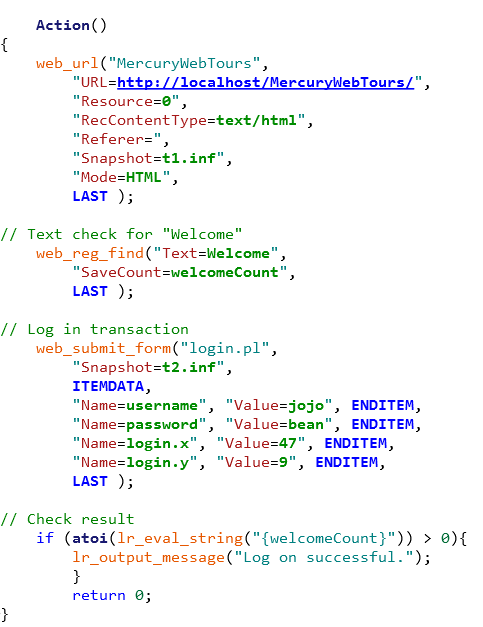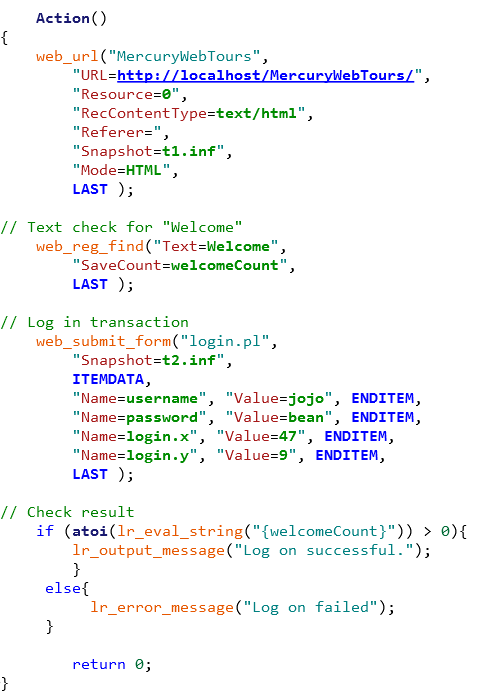‘if’ is a conditional statement in LoadRunner and its syntax is as same as the C language conditional statement. The conditional statement evaluates the given condition and controls the flow of the script.
Along with the flow control task, the LoadRunner ‘if’ statement also helps to check the correctness of the response and marks a transaction as Pass or Fail. For that purpose, you need to tweak the code.
Conditional Statements
1. ‘if’ statement:
It evaluates the value of a variable against the given condition and controls the flow as per the output (True or False). If the condition is fulfilled then only the next statement or statements enclosed by curly braces are executed. In case of failure of condition, the next statement or statements enclosed by curly braces are skipped and continue the execution.
Example:

2. ‘if-else’ statement:
This statement has two parts. If the condition of the first part does not fulfil then the statements written in the second part will execute automatically. The ‘else’ part contains the default statements. If there is only one line statement then you can write just after the ‘else’. On the other hand, if you have more than one statement then enclose them in a curly brace. The curly brace will start just after the ‘else’ word.
Example:

3. ‘if-(else-if……)-else’ statement:
If you have multiple conditions then use else-if to evaluate those conditions and execute the respective statements. The last ‘else’ contains the default statement.
Example:

4. ‘Switch-Case’ statement:
Another type of flow control statement saves you to write multiple else-if statements when you have a large number of cases. Based on the value of the parameter, a particular case is executed. ‘switch-case’ also has a default statement in case of failure of any matches with the given cases. In ‘if-else’, you need to write multiple ‘if-else’ statements and expressions based on the condition but in ‘switch-case’ you need to write only one expression for the multiple cases. Let’s see how ‘switch-case’ can be used in the above-given example.
Example:

These are the flow control statement which directs the execution by evaluating the condition. Along with the syntax of the conditional statement, you should also know the relational operators. These operators are used to write the expression of the condition.
< less than
<= less than or equal to
> greater than
>= greater than or equal to
== equal to
!= not equal to
You may be interested:
- Performance Testing Tutorial
- Performance Engineering Tutorial
- Apache JMeter Tutorial
- Neotys NeoLoad Tutorial

